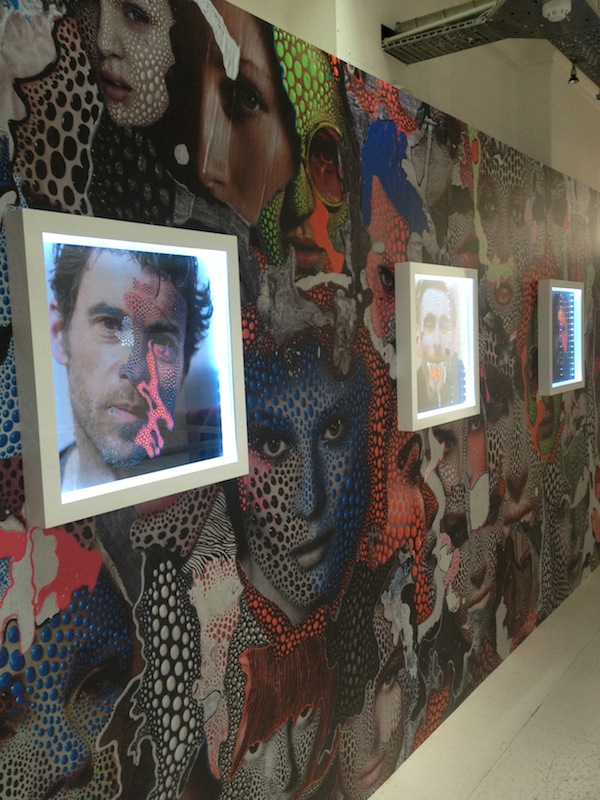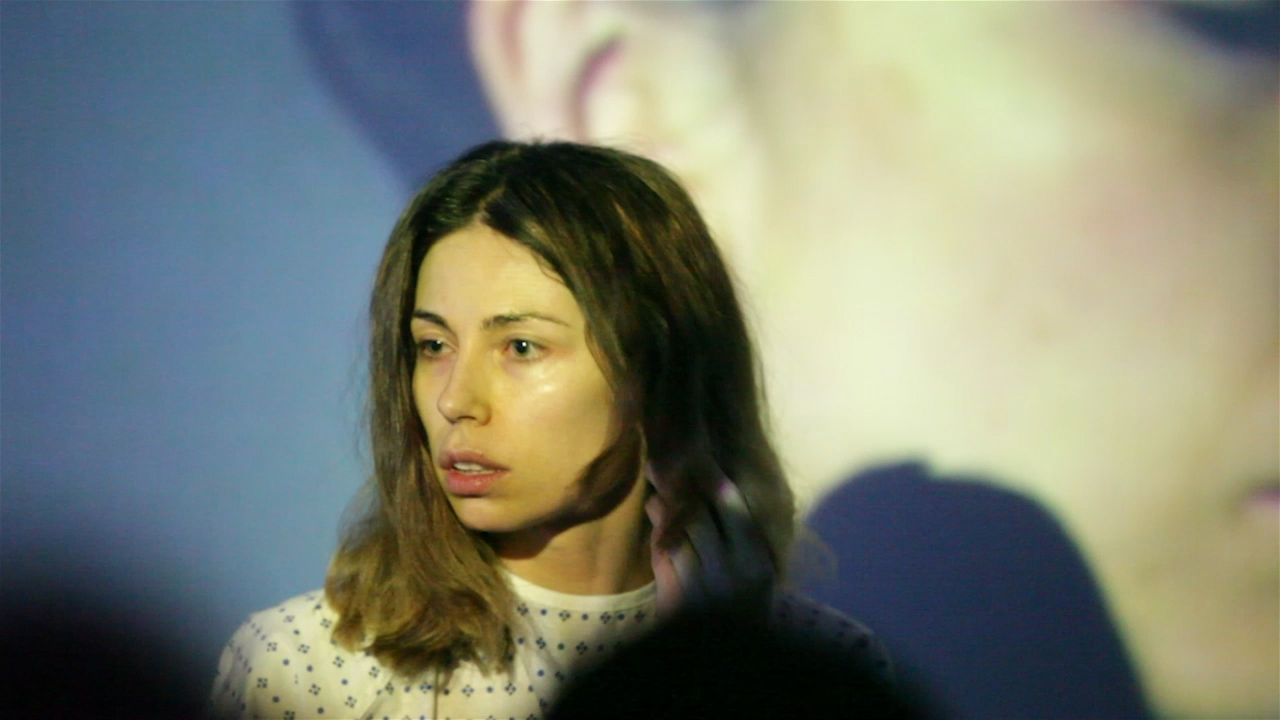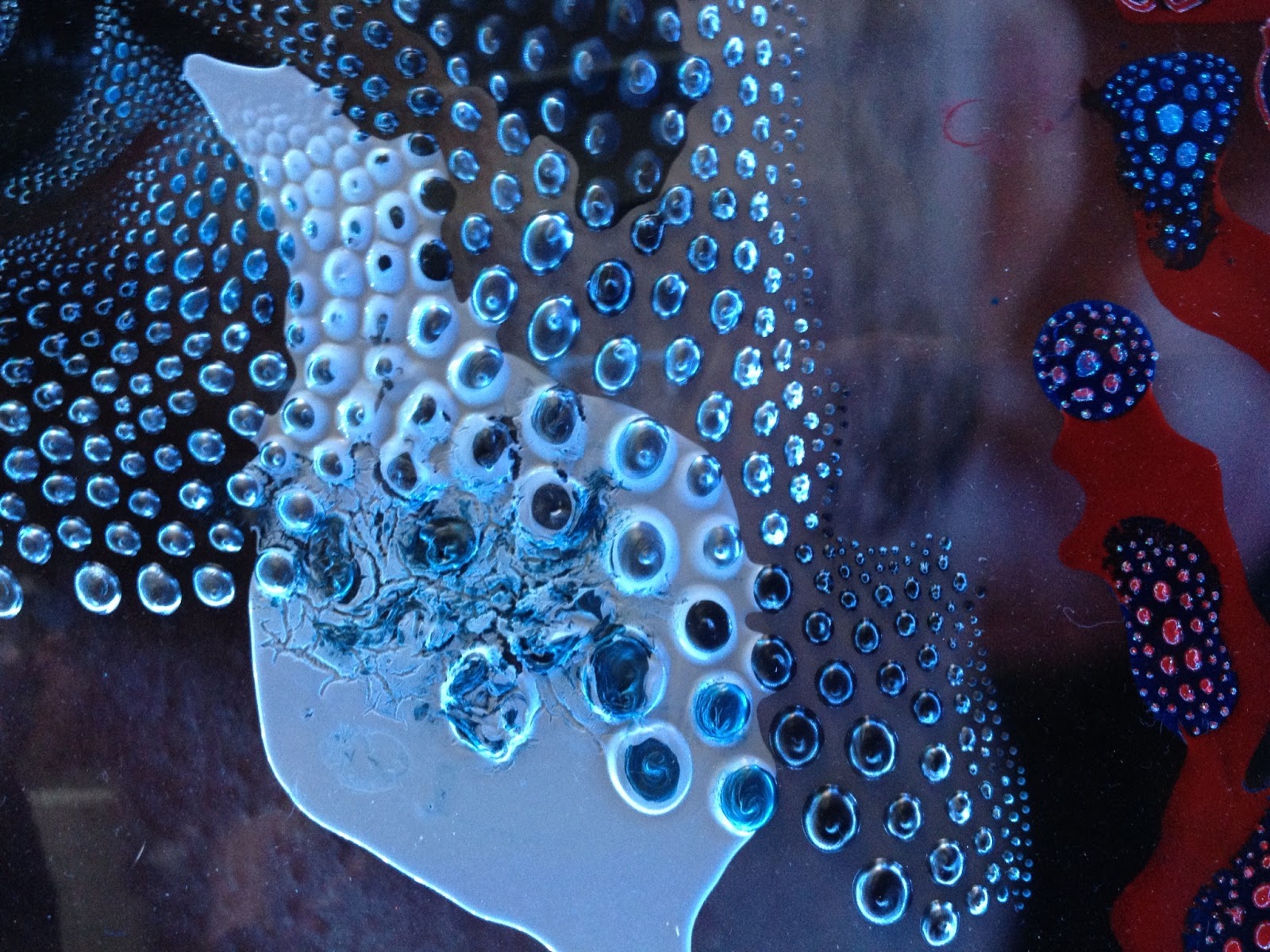21/05/13
Malgosia Stepnik:
City of Angels
20 Eastcastle Street
25 April – 23 May
2013
I try not to go to exhibitions with preconceptions or
expectations, but with a title like City of Angels, I did, perhaps foolishly,
expect Polish-born Malgosia Stepnik’s current show at 20 Eastcastle Street to
be somewhat pleasant to the eye and gentle on the mind. But I was mistaken.
City of Devils would actually be a more appropriate name. The painted-over
photographs, displayed in LED frames, and the purpose-designed wallpaper,
confront the visitor with zombie-like creatures, both disturbed and disturbing,
with faces overrun by amorphous fluorescent spillages, dripping from their
mouths, and scaly, scabies-like spots spreading across their beleaguered
visages. The hallucinogenic colours conjure up a very bad trip, and the
wallpaper, quite frankly, would induce nightmares of the very worst kind.

Stepnik, whose work draws on the tradition of
semi-autobiographical and confessional art produced by women artists since the
1960s, and is further influenced by philosophers such as Carl Jung (1875-1961),
herself studied Sociology, Psychology and Philosophy in Wroclaw, before coming
to London and acquiring a Fine Art Degree in 2008. Her multimedia approach
incorporates photography, painting, performance and film, and, alongside the
still works on show, there is also a film to be watched, and the opening night
viewing was accompanied by a haunting and traumatised performance in which
Stepnik, clad in a hospital gown, lopped handfuls of her hair with blunt
scissors. Perhaps her aim is to voice a critical comment on the aesthetic focus
and values of contemporary society, where even beauty is no longer beautiful
until it has been airbrushed or “perfected” still further?

Admittedly, close-up, there is something strangely alluring
about the glittering scabied pockmarks of the photoworks, raised blobs of
acrylic paint, glistening like gemstones in the LED light, but even so it
reminds me of Count Robert de Montesquiou’s topaz-encrusted tortoise from Belle
Époque Paris, which epitomises the desire to adorn and beautify taken to such
an extreme that one becomes blind to nature’s joys, inflicts cruelty, and truly
loses sight of aesthetic pleasure.
